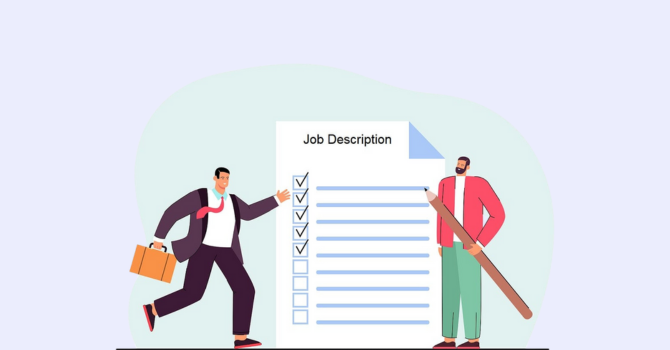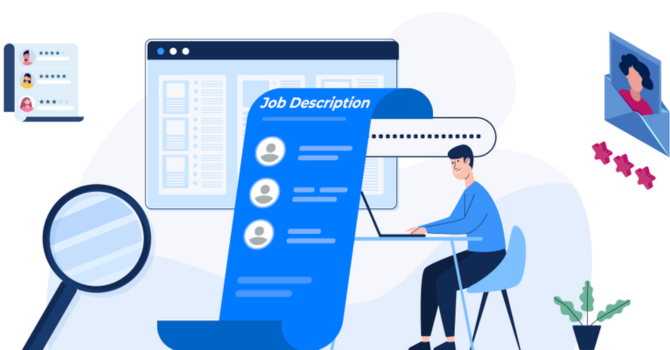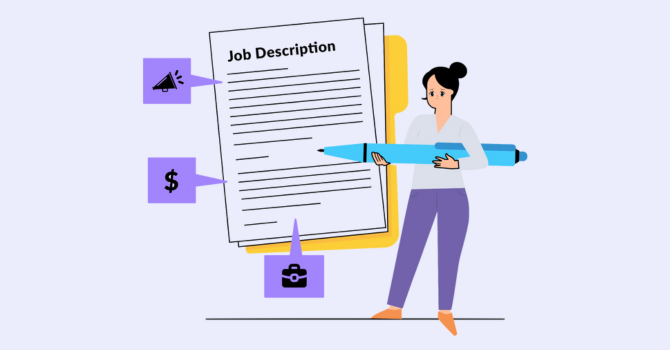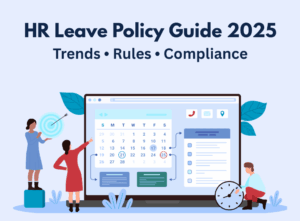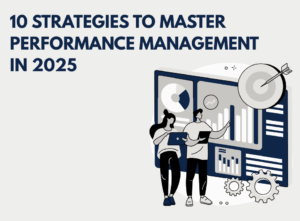What is a job description?
A job description is a comprehensive document that outlines the duties, responsibilities, qualifications, and expectations associated with a specific job role within an organization. It serves as a vital communication tool between employers and employees, providing a clear understanding of what the role entails and what is expected from the individual fulfilling that role.
This document typically starts with a job title that accurately reflects the position’s responsibilities and level within the organizational hierarchy. Following the title, a job description details the primary objectives and purpose of the role, offering a snapshot of the job’s overall function within the company.
In essence, a job description acts as a roadmap, delineating the key duties and responsibilities the employee will undertake on a day-to-day basis. It covers tasks, functions, and projects that the individual will be accountable for, helping them understand how their role contributes to the larger goals of the organization.
Moreover, a job description outlines the necessary qualifications, skills, and experience required for the role. It specifies the educational background, certifications, technical expertise, and any other competencies essential for successfully fulfilling the duties associated with the position.
Additionally, job descriptions often include information about the reporting structure, indicating who the employee will report to and who they will work closely with, providing clarity on team dynamics and hierarchy.
Ultimately, a job description serves as a foundational document in the recruitment process, aiding in attracting suitable candidates, setting performance expectations, guiding employee development, and ensuring alignment between an employee’s responsibilities and the company’s objectives.
Why are job descriptions important?
Clarity and Alignment:
Job descriptions provide a clear roadmap of roles and responsibilities, ensuring that both employer and employee are on the same page regarding job expectations. They outline the primary duties and tasks associated with a position, guiding employees on what is expected of them and how their roles contribute to the company’s objectives. This clarity minimizes misunderstandings, aligns employee efforts with organizational goals, and fosters a sense of purpose and direction.
Recruitment and Hiring:
In the recruitment process, job descriptions act as a vital tool for attracting qualified candidates. They serve as a means to accurately communicate the job role, its requirements, and the company’s culture, helping potential candidates assess their fit within the organization. Well-crafted job descriptions attract suitable applicants, ensuring that those with the right skills and qualifications apply for the position.
Performance Management and Evaluation:
Job descriptions form the basis for performance evaluations. By clearly defining roles and expectations, they provide a benchmark against which employee performance can be assessed. Employees can understand how their performance aligns with outlined responsibilities, aiding in constructive feedback and goal setting for professional development.
Legal Compliance and Risk Mitigation:
Accurate and comprehensive job descriptions contribute to legal compliance by ensuring fairness and transparency in employment practices. They provide a basis for creating non-discriminatory hiring and evaluation criteria. Additionally, in the case of legal disputes or compliance audits, clear job descriptions can serve as documentation, minimizing organizational risk.
Employee Development:
A well-structured job description outlines opportunities for growth and advancement within the organization. It helps employees understand the skills and qualifications needed to progress in their careers, promoting a culture of continuous learning and development.
In summary, job descriptions are essential as they provide clarity, guide recruitment efforts, aid in performance management, ensure legal compliance, and foster employee growth within the organization. They serve as a foundational document shaping the employee experience and organizational success.
How to Write a Job Description?
1. Job Title and Summary
Start with a clear and descriptive job title that accurately reflects the role. Follow it with a brief summary highlighting the primary objectives and purpose of the position within the organization.
2. Outline Responsibilities
Detail the key duties and responsibilities associated with the role. Use action-oriented language to clearly articulate the tasks, projects, and functions the employee will be accountable for. Organize responsibilities into bullet points for readability.
3. Specify Qualifications and Skills
Clearly outline the essential qualifications, skills, and experience required for the role. Include educational background, certifications, technical expertise, and any specific competencies crucial for success in the position.
4. Describe Reporting Relationships
Indicate the reporting structure within the organization. Specify who the employee will report to and collaborate with, providing clarity on team dynamics and hierarchy.
5. Highlight Company Culture and Values
Describe the company culture, its values, and how the role contributes to maintaining or enhancing these aspects. Emphasize the work environment, values, and qualities that contribute to success within the organization.
6. Formatting and Readability
Ensure the job description is well-structured and easy to read. Use concise sentences, bullet points, and subheadings to enhance readability. Maintain a professional tone and avoid jargon that might be unclear to candidates.
7. Review and Revision
Before finalizing, review the job description for accuracy, completeness, and alignment with the company’s goals. Seek input from relevant stakeholders to ensure consensus on the role’s requirements.
Essential Elements of a Job Description
An effective job description comprises crucial elements that provide a comprehensive understanding of the role. These essential components include:
Job Title and Summary: The job title should be clear and indicative of the role’s responsibilities. A concise summary highlights the purpose, primary objectives, and overall function within the organization.
Responsibilities and Duties: Detailed delineation of the core responsibilities and tasks associated with the role. This section specifies the day-to-day activities, projects, and duties the employee will undertake.
Qualifications and Skills: Clear specifications regarding the required qualifications, educational background, certifications, technical skills, and experience essential for the role.
Reporting Relationships: Identification of the immediate supervisor or manager the employee will report to, as well as any team members they’ll closely collaborate with.
Company Culture and Values Alignment: Describing the company’s culture, values, and how the role contributes to these aspects. This inclusion aids in attracting candidates who align with the organizational culture.
Location and Working Conditions (optional): Information about the job’s location, remote work options, and any specific working conditions or travel requirements.
Example of a Job Description
Job Title: Marketing Manager
Summary:
We are seeking an experienced Marketing Manager to lead our dynamic marketing team. The Marketing Manager will be responsible for developing and implementing strategic marketing plans, driving brand awareness, and overseeing all marketing initiatives to achieve company objectives.
Responsibilities:
- Develop and execute comprehensive marketing strategies to promote our products/services and increase market share.
- Manage and coordinate all marketing, advertising, and promotional activities, ensuring alignment with brand guidelines and objectives.
- Conduct market research and analysis to identify market trends, customer needs, and competitor activities.
- Collaborate with cross-functional teams to develop innovative marketing campaigns, including digital marketing, content creation, and social media engagement.
- Analyze campaign performance and metrics to optimize strategies and achieve targeted results.
- Lead and mentor the marketing team, providing guidance, support, and fostering a culture of creativity and excellence.
- Cultivate strong relationships with media outlets, agencies, and key stakeholders to maximize brand visibility and partnerships.
Qualifications and Skills:
- Bachelor’s degree in Marketing, Business Administration, or related field. Master’s degree preferred.
- Proven track record (5+ years) in marketing management with a focus on strategic planning and execution.
- Proficient in digital marketing tools, analytics, and CRM software.
- Exceptional leadership, communication, and analytical skills.
- Strong creativity and ability to think outside the box to drive innovative marketing campaigns.
Reporting Relationships:
The Marketing Manager will report directly to the Director of Marketing and collaborate closely with the Sales, Product Development, and Creative teams.
Company Culture and Values:
Our company fosters a collaborative and innovative work environment, valuing creativity, teamwork, and commitment to delivering exceptional results that exceed customer expectations.
Conclusion
Summarize the significance of job descriptions in facilitating effective hiring, aligning organizational goals, and fostering a positive work environment. Reinforce the need for detailed and well-crafted job descriptions in modern workplaces.
